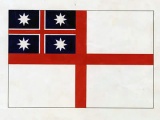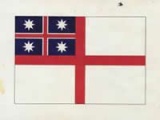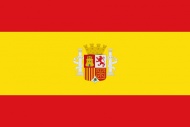Events In History
-
 20 March 1834NZ's first flag chosen
20 March 1834NZ's first flag chosenChiefs from the Far North met with James Busby at Waitangi to choose a flag to represent New Zealand on ocean-going ships. Read more...
Articles
Empire Day

Empire Day (24 May), was celebrated widely in New Zealand from 1903 and was a major event in the Vice-regal calendar.
- Page 1 - Empire DayEmpire Day (24 May), was celebrated widely in New Zealand from 1903 and was a major event in the Vice-regal
Flags of New Zealand

The New Zealand flag hasn't always been our official flag. It was adopted in 1902, replacing the Union Jack. Between 1834 and 1840, the flag of the United Tribes was recognised as our first 'national' flag. Waitangi Day 2010 saw the first official recognition of the national Māori flag.
-
Page 2 – United Tribes flag
On 20 March 1834, 25 chiefs from the Far North and their followers gathered at Waitangi to choose a flag to represent New Zealand.
-
Page 3 – Union Jack
The Union Jack served as New Zealand's flag from 1840 until 1902
-
Page 4 – The NZ flag
The maritime origins of the New Zealand flag from 1865 to 1902
-
Page 5 – Other official flags
Six flags other than the New Zealand flag are flown for official purposes in New Zealand.
-
Page 6 – The national Māori flag
A history of the national Māori (Tino Rangatiratanga) flag
-
Page 7 – Flag debates
The design and use of the national flag has always attracted debate
-
Page 8 – Flag referenda
In 2016 New Zealanders voted to keep the current national flag.
-
Page 9 – Further information
Find out more about New Zealand's flags
New Zealand's first flag

History and activities relating to New Zealand flags
- Page 1 - New Zealand's first flag - social studies activitiesHistory and activities relating to New Zealand flags
Schools and the First World War

Schools and children were quickly called into action at the outset of the First World War in 1914. Developing patriotic, fit and healthy citizens was seen as important to the survival of the country and the Empire. Hundreds of teachers joined the NZEF, including many from sole-teacher schools. Almost 200 never returned.
- Page 3 - Displaying patriotismIn late 1917 district education boards ordered that children salute the New Zealand flag at the start of each school day. Some teachers opposed this as too
Taming the frontier

In 1832 James Busby was appointed as the official British Resident to New Zealand. After arriving in the Bay of Islands in May 1833 he took steps to tame what he saw as a chaotic frontier society.
-
Page 4 – Declaration of Independence
At a hui (meeting) at Waitangi on 28 October 1835 called by James Busby, 34 northern chiefs who were to become known as the Confederation of United Tribes signed 'A Declaration
Armistice Day

After four terrible years, the First World War finally came to a close with the signing of an armistice between Germany and the Allied Powers on 11 November 1918. New Zealanders celebrated enthusiastically, despite having recently celebrated the surrenders of the three other Central Powers and the premature news of an armistice with Germany.
- Page 3 - False armisticeOn 7 November 1918 the Prime Minister assured the public - following rumours to the contrary - that the government was not holding back news of a German surrender. The next
New Zealand's 19th-century wars

War changed the face of New Zealand in the 19th century. Tens of thousands of Māori died in the intertribal Musket Wars from the 1810s to the 1830s. There were fewer deaths during the New Zealand Wars (1840s-1870s) between Māori and the Crown, but the consequences were still dire for many tribes.
- Page 8 - NZ Wars flagsFor many Maori in the 19th century, the Union Jack was frequently viewed as a potent symbol of Great Britain's power in New Zealand. In the New Zealand Wars, Maori parties who
Related keywords
- john key
- postal service
- WW1
- christmas
- poetry
- borneo confrontation
- royal navy
- armistice
- influenza pandemic
- germany
- newspapers
- training camps
- education
- opotiki
- primary schools
- school journal
- children
- teacher
- advertising
- maori leaders
- pai marire
- te kooti
- new zealand wars
- kingitanga
- james busby
- united tribes
- new zealand company
- korean war
- cold war
- united nations
- 1950s
- aviation
- le quesnoy liberation
- france
- vietnam war
- war objects
- te ua haumene
- queen elizabeth
- royal new zealand air force
- royal new zealand navy
- shipping
- waitangi day
- navy
- governor-general
- richard seddon
- spanish civil war
- prince of wales
- rotorua
- 1920s
- levin
- parades
- clothing
- potatau te wherowhero
- pioneer battalion
- maori in war
- moutoa
- whanganui war
- south african war
- medals
- boer war
- taranaki
- new plymouth
- royal tours
- shannon
- samoa
- mau movement
- whanganui city
- putiki
- pre-1840 contact
- public holidays
- empire day
- charles bledisloe
- protest
- hikoi
- tino rangatiratanga
- australia
- german samoa occupation
- german navy
- waitangi
- sesquicentenary
- gallipoli campaign
- quinns post
- declaration of independence
- olympics
- cms
- kororareka
- hone heke
- painting
- northern war
-
Main image: Red Peak flag
Red Peak flag
























































